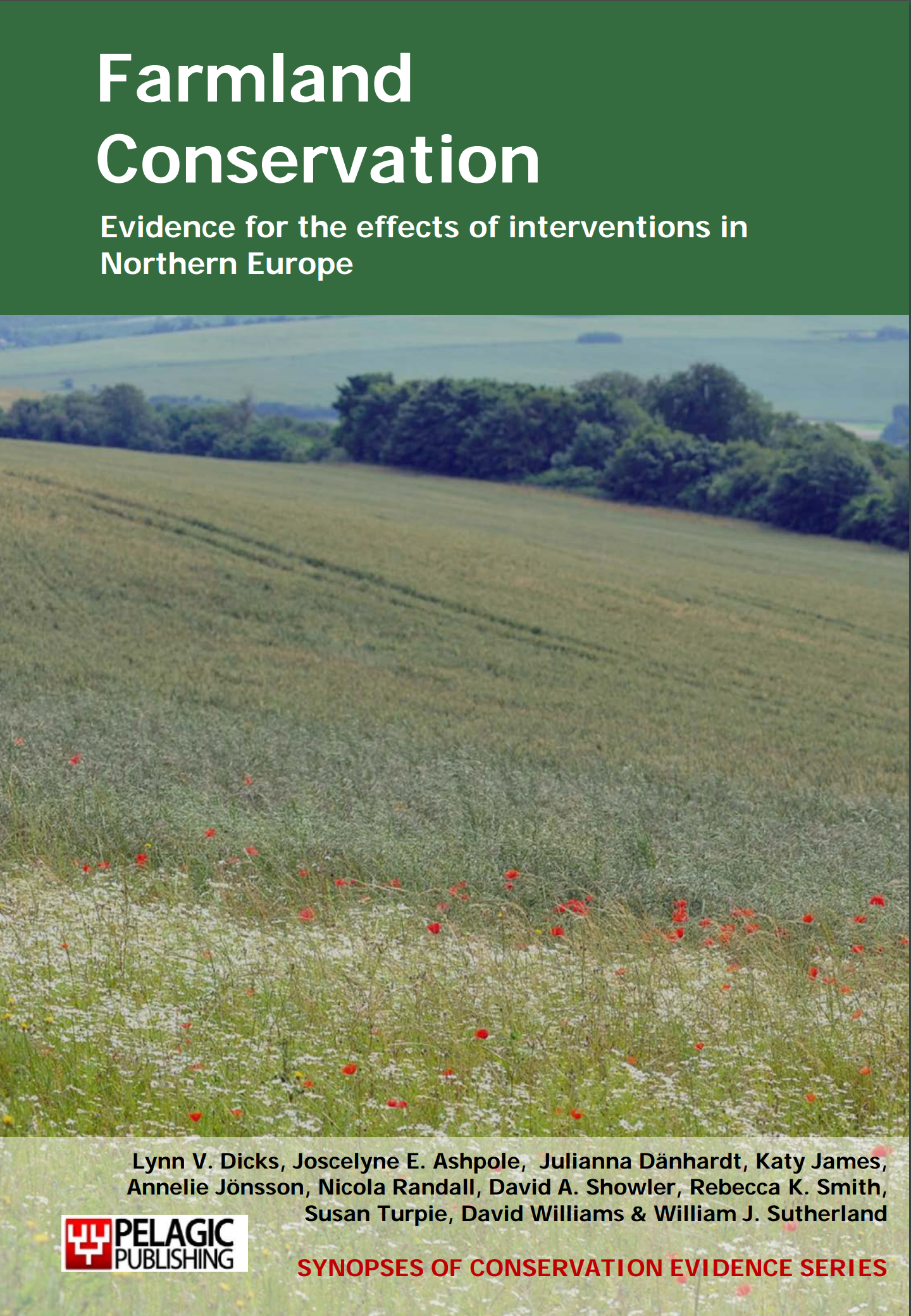Use mixed stocking
-
Overall effectiveness category Evidence not assessed
-
Number of studies: 1
View assessment score
Hide assessment score
How is the evidence assessed?
-
Effectiveness
not assessed -
Certainty
not assessed -
Harms
not assessed
Study locations
Supporting evidence from individual studies
A replicated, controlled study from 1991 to 1994 in the UK (Dennis et al. 2001) in a matgrass Nardus stricta-dominated grassland found that arachnid (spiders (Araneae), harvestmen (Opiliones) and pseudoscorpions (Pseudoscorpionida)) abundance and species richness (using suction but not pitfall sampling) were higher on single rather than mixed livestock grazed grasslands. Arachnid abundance was significantly higher in ungrazed and taller (6.5 cm) sheep-grazed swards than in both tall and short (4.5 cm) mixed stocking treatments (suction traps: 82 individuals in ungrazed, 26 in sheep-grazed to 6.5 cm, 13-16 in mixed stocking; pitfall traps: 3.5 individuals in ungrazed, 3.5 sheep-grazed to 6.5 cm, 3.2-3.3 mixed stocking treatments). Arachnid numbers in short sheep-grazed plots were intermediate (suction trap: 21 individuals, pitfall traps: 3.3). Individual species tended to show similar patterns. Pitfall traps indicated no significant difference in total arachnid species richness in ungrazed (49 species), sheep-grazed (45-50) or mixed-grazed treatments (49-50) or numbers of money spider (Linyphiidae) species (37 species in ungrazed treatment, 32-37 in sheep-grazed treatment, 35-38 in mixed stocking). Suction sampling showed species richness was significantly higher in ungrazed and taller sheep-grazed swards than in mixed livestock treatments for total arachnid species (31 species in ungrazed, 21 in taller sheep-grazed swards, 15-16 in mixed stocking) and money spider species (18, 15 and 9-11 respectively). Significantly more spider webs were counted in ungrazed (1-14 webs/m²) than in sheep-only (1-4 webs/m²) and mixed-stocking treatments (1-4 webs/m²). More money spider species were sampled from webs in tall mixed-stocking (6 species) and shorter sheep-only (4.5) plots than in other treatments (2.0-2.5). There were two replicates of each treatment in 10 plots across 22 ha. The five treatments were: ungrazed, sheep-grazed (sward 4.5 cm tall), sheep-grazed (6.5 cm), sheep and cattle-grazed (4.5 cm) sheep and cattle-grazed (6.5 cm). Sheep were grazed continuously at varied rates to achieve the different sward heights from May-October (1991-1994). Six cattle were grazed from June-August in the two mixed livestock treatments. Twelve pitfall traps/plot were used to sample continuously from April to October, 1993-1994. At monthly intervals, six suction samples were taken and webs were counted within a 1 m² rectangle on the grass near 6-12 pitfall traps/plot.
Study and other actions tested
Where has this evidence come from?
List of journals searched by synopsis
All the journals searched for all synopses
This Action forms part of the Action Synopsis:
Farmland Conservation
Farmland Conservation - Published 2013
Farmland Synopsis





)_2023.JPG)














